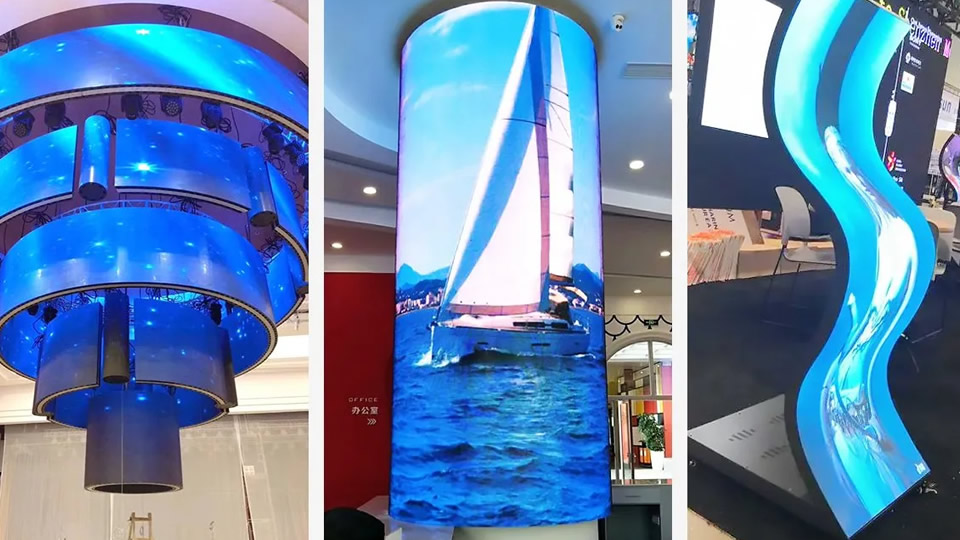Flexible led displays are changing how visual content is presented in retail and museum environments. These bendable, lightweight screens offer more than just a modern look—they provide real advantages in creative layout and space usage. Whether used to highlight products or tell a story, Flexible LED Displays bring versatility that traditional screens can’t match.

In retail settings, space is often limited. Flexible LED screens can wrap around columns, curve along walls, or hang in open air. This makes it easy to turn even small areas into attention-grabbing visual zones. A flexible screen wrapped around a pillar, for example, can show rotating ads, promotions, or branded content without taking up valuable shelf space. Because of their slim design, these displays don’t disrupt the flow of the store and can enhance the shopping experience.
Museums also benefit from the creative freedom flexible led displays provide. In exhibition halls, these screens can be used to show animations, videos, or educational content in ways that support the overall theme. A curved LED wall can simulate a panoramic environment or serve as a moving timeline that guides visitors through history. With flexible displays, it becomes easier to create immersive exhibits without the need for bulky equipment.
Another great use is ceiling or floor integration. In retail, LED strips hanging from the ceiling can create a futuristic look or display seasonal content. For museums, a similar setup could be used to simulate natural elements like stars or clouds above an exhibit. Floors are often overlooked, but flexible LED panels can be installed to guide foot traffic or create interactive paths that react as people move.
For both retail and museums, one of the biggest advantages is that content on flexible LED displays can be updated instantly. This means a museum can easily change exhibitions without redesigning physical setups, and a retailer can switch promotions without printing new posters or banners. It saves time, lowers cost over the long term, and keeps spaces looking fresh and modern.
The key to using flexible LED displays effectively is thoughtful placement and relevant content. The goal should be to support the space’s purpose, not overwhelm it. A display should feel like a natural part of the environment, whether it’s enhancing product presentation in a retail store or helping visitors connect with information in a museum.
As prices for flexible LED technology continue to drop, more businesses and institutions are exploring its potential. It’s not just about showing videos or images—it’s about creating an atmosphere that leaves a lasting impression. With the right strategy, these displays can add real value to any space.

